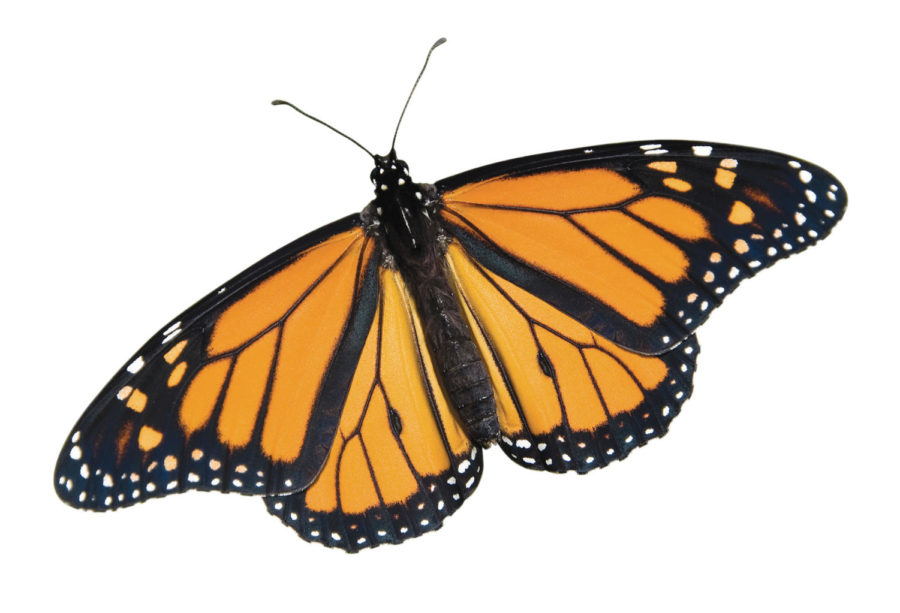Monarch decline linked to pesticides
Research shows that the monarch butterfly population is declining.
April 5, 2012
A recently published Iowa State study shows an unexpected consequence of genetically engineered corn and soybeans — a decline in monarch butterfly populations.
The unexpected “middleman” in the relationship is milkweed. Milkweed serves as a host plant for the eggs and caterpillars of monarch butterflies.
“Milkweed was once common in Midwestern fields, but now has disappeared due to recent herbicide practices,” said John Pleasants, lead researcher and Iowa State University adjunct assistant professor of ecology, evolution and organismal biology.
Genetically engineered herbicide-resistant crops allow farmers to spray fields with glyphosate, better known as Roundup, to kill weeds, including milkweed, without harming the crops.
The massive loss of the milkweed habitat for monarchs is one of the first clear examples of the unintended result of genetically modified crops, Pleasants said.
“When we use new technology and practices, we don’t know always what the consequences are,” Pleasants said. “It is an ‘unknown unknown,’ and we are just discovering the impact on monarch populations.”
Between 1999 and 2010, the number of monarch eggs declined by an estimated 81 percent across the Midwest. This is the same period herbicide-resistant crops were implemented by farmers, the study says.
The study was published in the journal “Insect Conservation and Diversity” in March. It tied the loss of habitat to a continent-wide decline in monarch numbers.
A critical portion of the study monitored both milkweed and monarch populations.
Robert Hartzler, professor of agronomy, supplied much of the data on milkweed population density in Iowa over the past decade.
Pleasants was then able to extrapolate those numbers to landscape use data across the Midwest, which showed an estimated 58 percent decline in milkweed plants throughout the Corn Belt.
Karen Oberhauser, lead researcher in wildlife and conservation biology at University of Minnesota, provided much of the data on monarch population decline for the study.
Since 1997, Oberhauser has collected monarch population data through the Monarch Larva Monitoring Project. This project allows volunteers across the continent to collect data by counting monarch larva on milkweed during the breeding season.
“Volunteers enjoy participating in the research, because they want to know more about conservation — especially when it comes to the iconic monarch butterfly,” Oberhauser said.
While the study is able to connect the use of genetically engineered crops to the decline of monarchs, it does not mean it will be able to reverse the problem, Pleasants said.
“We can’t go back with this kind of technology,” Oberhauser said. “We must look forward and use this information to make the best use of the land we still have.”
Much of the land that is still available for milkweed plants is along roadsides, in pastures and on conservational lands. Increased planting and protection can offer valuable habitats for monarch butterflies.
While the study does not yet offer any plan of action, the researchers believe that awareness and the conservation of land for milkweeds is critical.
“It is important we do all in our power to protect the monarchs, especially now that we know one of the leading reasons for their decline,” Pleasants said.







